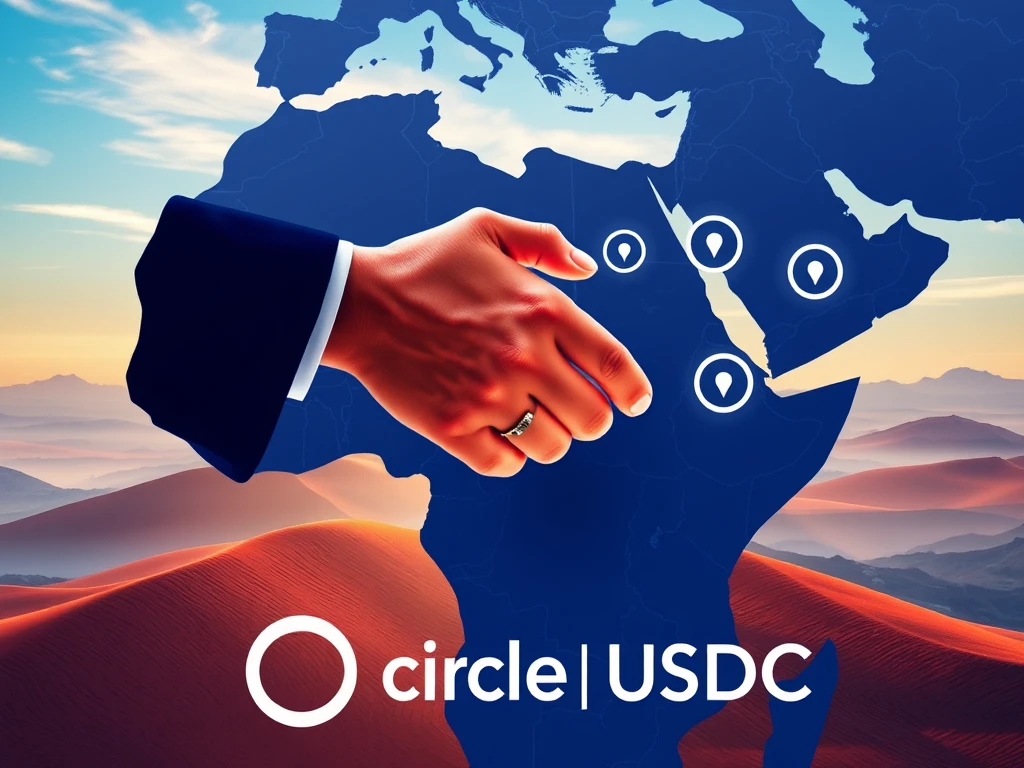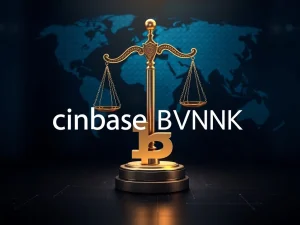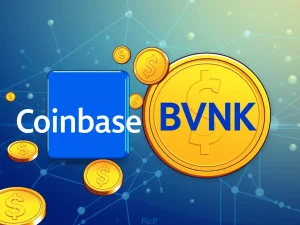Circle Unleashes Potential for Africa Cross-Border Payments with Onafriq USDC Deal

Imagine sending money across African borders quickly and affordably. That’s the vision driving a significant new partnership between Circle, the issuer of the USDC stablecoin, and Onafriq, Africa’s largest payments gateway. This collaboration aims to tackle the notoriously high costs associated with cross-border payments on the continent, potentially revolutionizing how individuals and businesses move value.
Circle and Onafriq Join Forces: What Does This Mean?
Stablecoin issuer Circle is expanding its footprint in Africa by teaming up with Onafriq. This partnership is piloting the use of USDC settlements within Onafriq’s extensive network. Onafriq boasts connections to over 500 wallets and a massive reach across more than 40 countries, touching over 200 million bank accounts.
Dare Okoudjou, founder and CEO of Onafriq, highlighted the goal: “By integrating USDC, we aim to simplify financial transactions for institutions and individuals, reduce costs and strengthen trust.” The move is set to make digital financial services more accessible and reliable across the continent.
Why Focus on Africa Cross-Border Payments?
The current system for cross-border payments in Africa is often inefficient and expensive. A large percentage of transactions between African countries are routed outside the continent, settled in foreign currencies like the US dollar or euro, and then sent back. This complex process results in substantial fees, estimated to be around $5 billion annually.
Miriam Kiwan, Circle’s vice president for the Middle East and Africa, sees immense potential in the region for digital asset innovation. She specifically pointed to the adoption of stablecoins for cross-border payments as a key area for growth. The partnership aims to create secure and transparent digital payment rails that can enhance economic empowerment and connectivity.
How Can USDC Stablecoin Help?
Using a USDC stablecoin for settlements within Africa offers several advantages:
- Cost Reduction: Bypassing traditional correspondent banking routes can significantly lower transaction fees.
- Speed: Stablecoin settlements can be faster than traditional methods, which can take days.
- Transparency: Transactions on a blockchain offer a higher degree of transparency.
- Stability: As a stablecoin pegged to the US dollar, USDC offers relative price stability compared to volatile cryptocurrencies or rapidly depreciating local currencies.
Recent data from Chainalysis supports the growing relevance of stablecoins in the region. By October 2024, stablecoin transactions accounted for roughly 43% of the total transaction volume in Sub-Saharan Africa. This rise is partly attributed to currency devaluation in some countries, like Nigeria, where the naira has seen significant depreciation.
Circle’s Global Strategy and Cross-Border Payments
This collaboration with Onafriq is part of Circle’s broader global strategy to promote USDC adoption and improve cross-border payments everywhere. Circle recently launched the Circle Payments Network (CPN), a consortium designed to streamline global fund movement and settlement using stablecoins. CPN includes over 20 partners and receives advisory support from major banks, targeting use cases like remittances, payroll, and treasury payments.
Furthermore, Circle has been active in securing regulatory approvals in key international markets, such as the in-principle approval received from the Financial Services Regulatory Authority of the Abu Dhabi Global Market. These steps demonstrate Circle’s commitment to building a compliant and widely accessible network for USDC-based transactions.
What’s Next for Africa and Stablecoins?
The pilot program between Circle and Onafriq is a crucial step in demonstrating the viability of stablecoins for large-scale cross-border payments in Africa. If successful, it could pave the way for wider adoption, bringing much-needed efficiency and cost savings to millions of individuals and businesses across the continent. The potential for digital assets to foster economic growth and financial inclusion in emerging markets like Africa is substantial, and partnerships like this are bringing that future closer.
This initiative highlights how innovative financial technology, powered by stablecoins, can directly address real-world problems like high remittance costs and inefficient international transfers, ultimately contributing to greater financial connectivity and empowerment in Africa.







